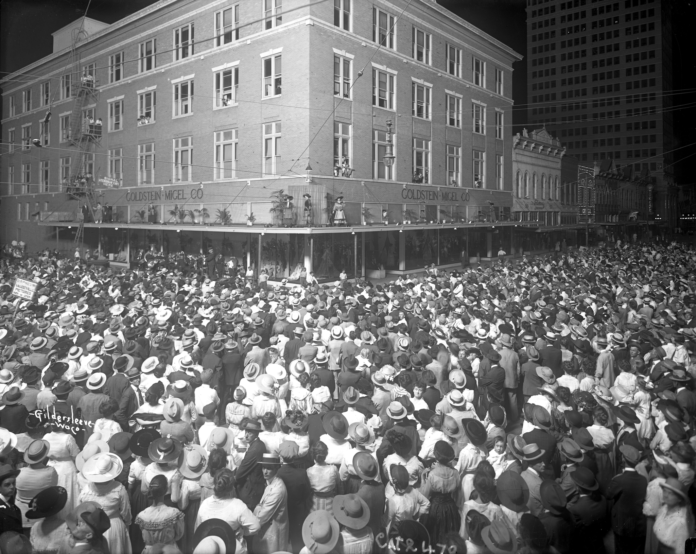Thanks to one historical photographer, Fred Gildersleeve, there are countless photographs of Baylor and Waco from over 100 years ago. Now, two Baylor faculty members are immortalizing his work.
John Wilson, interim dean of university libraries, and Geoff Hunt, audio and visual curator for the Texas Collection are releasing their book “Gildersleeve.”
Gildersleeve was Baylor’s contract photographer for about five decades starting in 1905 and took many iconic pictures of early Waco’s people, places and historic events. He moved to Waco from Colorado in 1905 at the age of 25 and made Waco his home until his death in 1958, according to Hunt
“The photographs are just a fraction of what he did and what we have,” Hunt said. “It’s a very small representation of a very large collection. We wrote the book to appeal to people interested in Waco history and history in general, and interested in photography as an art form.”
Hunt said that Wacoans may be familiar with his work because, for many years, Fred Gildersleeve sold his work from his studio. People bought photographs of Baylor games, buildings that were impressive at the time, such as The Cotton Palace, and important events in the city like the Prosperity Banquet.
“He took the biggest flash photograph of its time in 1911 at the Prosperity Banquet,” Hunt said. “This was to celebrate Waco’s rise in business and also to celebrate the construction of the Alico building at that time. He managed to — with the use of flash photography — illuminate that nighttime photograph showing 1,200 people two blocks long on Fifth Street dining. That photograph made national fame.”
As Baylor’s contract photographer into the ’50s, Gildersleeve took the iconic pictures of the first Homecoming game, Wilson said. The Baylor team wanted him to photograph the games until he was no longer able to.
Wilson researched Gildersleeve’s life to write the biographical portion of the book. He found an eccentric man whose details were often difficult to track down.
“He certainly documented early Waco … many of the good things that happened and some of the bad as well,” Wilson said.
One of the images that was included in the biographical portion, but not in the collection of photographs, was of the famous lynching of 17-year-old Jesse Washington in 1916, which galvanized the NAACP.
“He realized that this was terrible publicity for Waco, and that’s sort of the dark part of his photographs,” Wilson said. “He was an artist in a way, documenting everyday life.”
The book includes a 15-page introduction written by Wilson and is split into five categories of photography: “Mexico,” “Agriculture and Industry,” “Town Life,” “Transportation” and “Buildings and Baylor.”
The book will be available at Barnes & Noble, the Baylor Bookstore and is available for pre-order at Amazon.com. It costs $49.95 and weighs six pounds.
“It’s a lot of book for the money,” Hunt said.
“Once scanning was perfected, we were so pleased with the results that it led to the idea of wanting to share what we have,” Hunt said. “It’s really about sharing and giving to the community some of the photographic history.”






